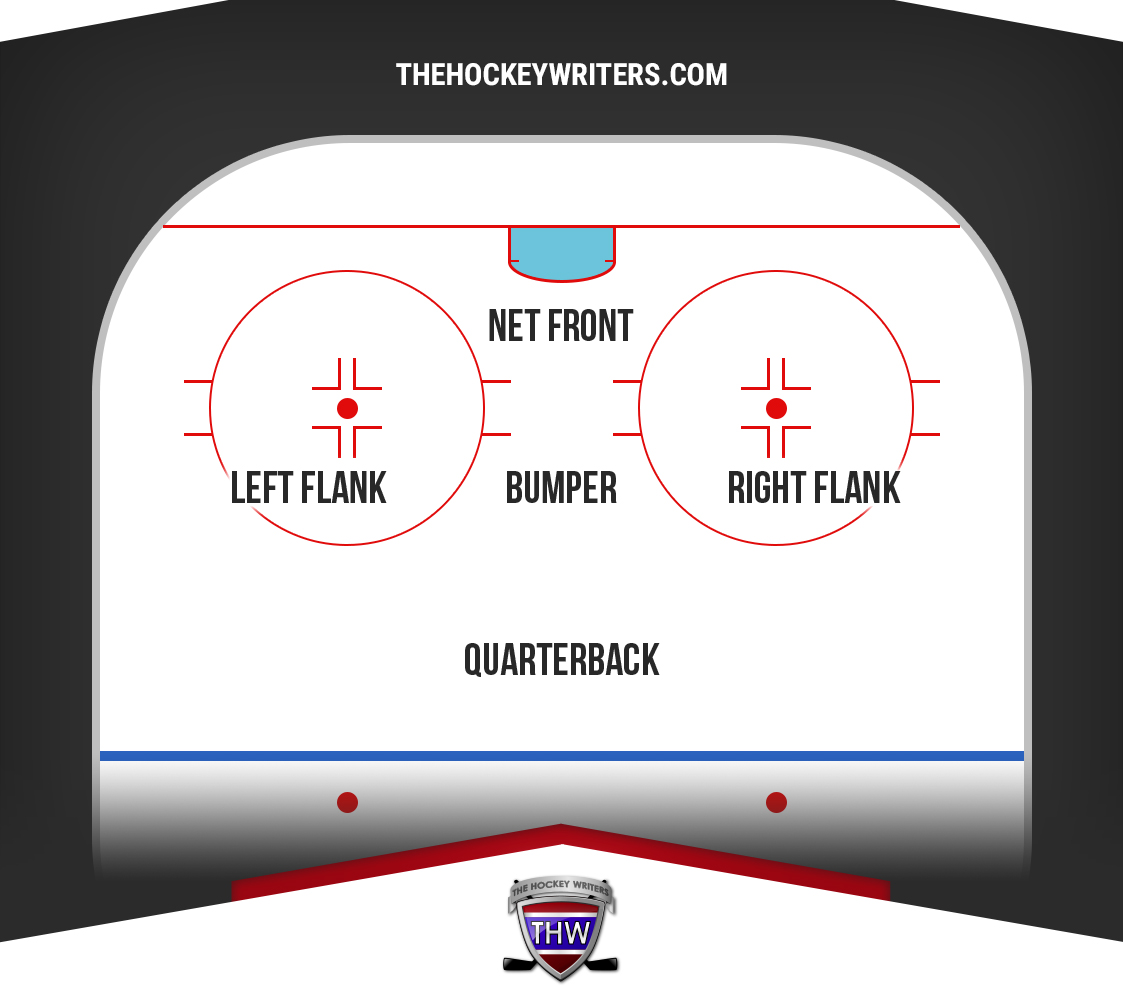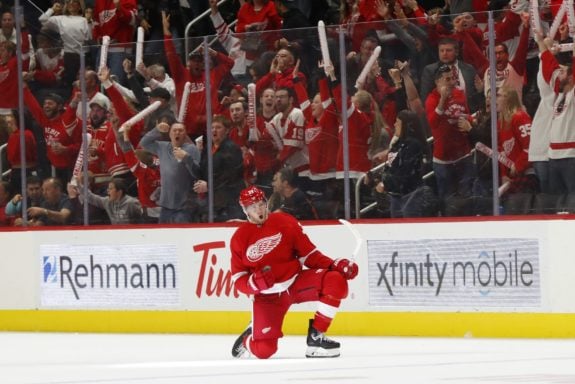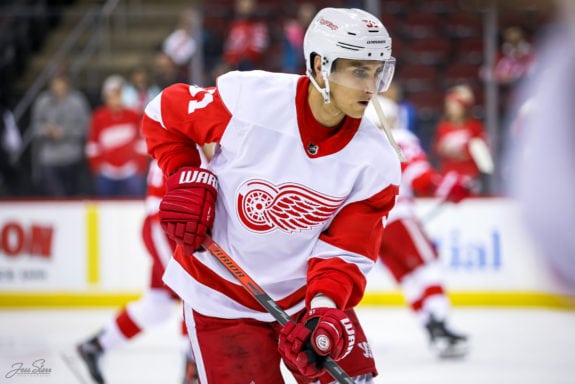There wasn’t much power in the Detroit Red Wings’ power play last season.
The Red Wings finished the 2019-20 season with the 29th-ranked power play – converting at a paltry 14.9 percent while up a man. Only the Anaheim Ducks (14.7 percent) and Ottawa Senators (14.2 percent) fared worse.
To address this, the Red Wings added several players to boost their secondary scoring this offseason.
“We have a whole bunch of fresh faces, so we have to make sure we value practices,” Jeff Blashill shared on a Zoom call with the media prior to training camp. “We’re going to have internal scrimmages and we’re going to place great valuation on those in order to make decisions on who’s earning power-play time, PK time, five-on-five ice time, who’s earning spots on the team. And we also have to make sure our group is ready.”
With the competition for ice time heating up, let’s examine how Detroit’s power play could significantly improve this season.
Related: 5 Red Wings 2020-21 Training Camp Storylines to Watch
Quick Power Play Primer
Before diving into the power play units, let’s first go over the setup and positions. In the past, Detroit has employed a 1-3-1 formation, and they should continue to do so. Below is an example of a 1-3-1 setup with the five positions listed.

In this formation, the quarterback, left flank, and right flank control the puck most of the time. The three look for opportunities to create wide open shots or exploit holes in the penalty kill to feed the bumper or net front.
In addition to their roles in the offensive zone, one or two players are usually designated as puck carriers for zone entries. These players use their vision and speed to rush the puck up ice with the goal of a controlled entry into the offensive zone.
Now, onto Detroit’s power play units.
Red Wings’ First Power Play Unit
Quarterback: Filip Hronek
Right Flank: Anthony Mantha
Left Flank: Dylan Larkin
Bumper: Robby Fabbri
Net Front: Tyler Bertuzzi
Puck Carriers: Filip Hronek & Dylan Larkin
Ideally, the top power play should run through Larkin on the left flank. He can give-and-go with Hronek up top, shoot rainbow road passes over to Mantha, or tee up Fabbri in the slot, let alone create opportunities for himself to shoot. Larkin should not be stagnant on the half wall, but rather move up and down the boards, pulling defenders away from his linemates and opening passing lanes.

Opposite from Larkin, Mantha possesses a lethal one-timer from the right circle. Detroit’s PP1 can either tee up Mantha’s one-timer or use the threat of Mantha’s shot to create (and exploit) space elsewhere. Being a decoy could allow Hronek and Fabbri to get good shots off with traffic in front.
Speaking of traffic in front, Bertuzzi has established himself as a key net-front presence over the past two seasons. While he’s no Tomas Holmstrom, Bertuzzi does have great hand-eye coordination in front of opposing goalies. In addition, he’s also an underrated playmaker, giving the Red Wings additional looks as teams adapt to their power play structure.
Red Wings’ Second Power Play Unit
Quarterback: Troy Stecher
Right Flank: Filip Zadina
Left Flank: Sam Gagner
Bumper: Vladislav Namestnikov
Net Front: Bobby Ryan
Puck Carriers: Troy Stecher & Filip Zadina
First and foremost, Detroit’s second power play looks substantially better than last year’s unit – on paper, at least. No more Frans Nielsen, Valtteri Filppula, or Justin Abdelkader struggling to lug the puck into the offensive zone.

PP2 features several newcomers in Bobby Ryan, Vladislav Namestnikov, and Troy Stecher. Sam Gagner is relatively new as well, considering he only skated in six games for the Red Wings last season. But the key to PP2’s success is tied to the lone carryover from last year.
Like Mantha on the top power play unit, Filip Zadina should be the trigger man for PP2. The 21-year-old has a wicked shot from the right flank that he’ll want to tee up. With 17 Czech games already under his belt this season, expect Zadina to be featured prominently when the second power play unit takes the ice.
Gagner projects to line up opposite of Zadina on the left flank with Stecher up top. The former has above-average vision to dish the puck around the offensive zone, while the latter is more of a default choice with most of Detroit’s other blueliners lacking strong offensive skills.
With Ryan better suited for a net-front role, Namestnikov is the best remaining forward to occupy the slot as the bumper.
Like PP1, the second power play unit should run through Gagner on the left flank. It’s a simple approach, but can be effective if Gagner’s linemates can find soft spots in coverage.
Wild Cards
- If Michael Rasmussen is called up to the Red Wings, he should immediately assume the net-front role on the second power play unit. Rasmussen has elite hand-eye coordination and creates a huge screen with his 6-foot-6 frame.
- The same goes for Dennis Cholowski – he should become the quarterback of PP2 if brought up. The young defenseman is an upgrade over Stecher in terms of vision and rushing the puck up ice.
- If Stecher doesn’t generate a lot of opportunities with the second power play, Danny DeKeyser could also slot in at quarterback for a few reps. DeKeyser can dish the puck well and is stronger in the offensive zone than the rest of Detroit’s blueliners.
- At some point, the Red Wings should give Evgeny Svechnikov a look on the power play, either in the bumper role or in front of the net. He has the offensive skill set to create opportunities, plus a little extra time and space could do wonders for Svechnikov’s confidence with the puck.
Final Word
Detroit’s lack of secondary scoring during the 2019-20 season also applied to their second power play unit. The additions of Ryan and Namestnikov, plus the promotion of Zadina should help address this.
The Red Wings simply have more skilled depth this year. This will push the players to compete harder for power play time and maximize their opportunities, resulting in an improved man advantage. Plus, having a healthy Anthony Mantha certainly won’t hurt.
Related: Red Wings & Golden Knights: Mock Salary Cap Trade
You won’t see Detroit’s power play ranked among the NHL’s elite, but they’ll be better than what we’ve seen in the past.
Stats courtesy of NHL.com.